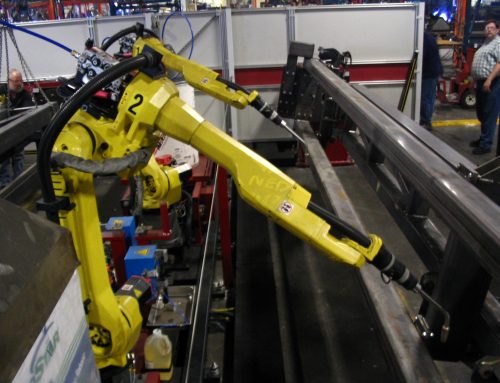 The Labor Department reported 4.3% unemployment in May, the lowest it has been since 2001. Productivity, on the other hand, remained flat during the first quarter. While that is an upward revision from the DOL’s expected productivity loss of 0.6%, it’s still a negative drag on economic performance overall. While low unemployment seems like something to celebrate, could that and sluggish productivity portend economic difficulties ahead? And what does wage growth have to do with it?
The Labor Department reported 4.3% unemployment in May, the lowest it has been since 2001. Productivity, on the other hand, remained flat during the first quarter. While that is an upward revision from the DOL’s expected productivity loss of 0.6%, it’s still a negative drag on economic performance overall. While low unemployment seems like something to celebrate, could that and sluggish productivity portend economic difficulties ahead? And what does wage growth have to do with it?
A recent article in The Wall Street Journal demonstrated that such historic low unemployment preceded three economic downturns: in the late 1960s followed by spiraling inflation in the 1970s, the late 1990s before the dot com bust, and 2006/2007 before the real estate bubble burst. The writer draws the connection that low unemployment can lead to circumstances that create a higher inflationary environment: “…as companies compete for scarce workers, they bid up wages and raise prices on goods and services to protect profit margins.”
However, a lack of exuberance distinguishes the current economic picture from these previous examples. The tech and real estate bubbles were predicated upon what could be aptly described as a “wish and a prayer” and confidence was high. The current recovery has been slow and marked by different attitudes and circumstances. Americans are paying down debt, while wage growth has been largely stagnant at 2.5%, particularly compared to 6% in the 1960s and 4% in the 1990s and early to mid-2000s.
Another distinguishing feature is low productivity:
“The Congressional Budget Office estimates that after all these years of sluggish economic growth, today’s economy is still producing goods and services at a slower rate than it is capable of producing…”
The productivity gains in technology over the past 20 years have not had a lasting impact. The 1990s and early 2000s saw productivity increases from technology, but those gains have slowed, a trend that appears counterintuitive. Thus, there is an interesting intersection between productivity, low unemployment, and wage growth. Typically, a market with low unemployment, such as we are now experiencing, would place upward pressure on wage growth: fewer workers and more jobs mean companies must increase wages to compete. However, low productivity puts downward pressure on wage growth—companies who are not producing as many goods and services will not be able to increase wages.
Most economic events are viewed more clearly through the rear window. The current circumstances with productivity, unemployment, and wage growth appear to be an interesting conundrum to watch over the coming months and years.





